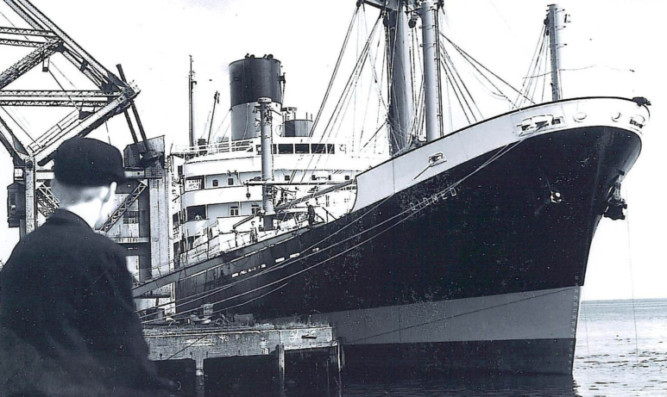Once upon a time, its ships voyaged all over the Earth. On Monday evening, the history of the Caledon Shipyard will be brought to life on board one of Dundee’s most historic vessels, HM Frigate Unicorn. Jack McKeown finds out more about the men behind the ships.
For more than a century, the Caledon Shipyard was one of Dundee’s biggest manufacturing success stories.
More than 6,000 people worked there at its height. Now it is no more than a fading memory, recalled only by those who were already adults in 1981.
John Dein was one of the many thousands of young men who learned a trade there. The 74-year-old left school at 15 and walked straight into the shipyard as an apprentice draughtsman.
“I was there for six years until I was 21,” he says. “It was one of the best places to do an apprenticeship. The standard of training was second to none.
“As a draughtsman, I was in the office a lot of the time. But everyone had to do six months’ practical, which meant being in the yard, outdoors.
“That could be very cold and dreary, especially with how the winters were back then. I was at the shipyard full-time and going to night classes three times a week, so it was pretty hard work.”The Caledon Shipyard by John Dein takes place on board HM Frigate Unicorn tonight at 7.30pm. Tickets are £4/£2 concession and are available at the door or online atwww.frigateunicorn.orgWhen he started, John was paid the princely sum of £1.50 a week.
“It doesn’t sound very much but a tank of petrol hardly cost anything then and I can’t remember ever feeling too hard-up,” he says.
John went on to become a heating and ventilation engineer and helped develop the systems that heat Ninewells Hospital. He then set up his own business and retired in 2005.
His years on the shipyard remain some of the fondest of his working life.
“There were some great characters in that yard,” he says. “Our foreman riveter, Alan Thompson, was one of them. He was a formidable guy.
“One weekend, he got gored by a bull. A sign went up outside the gates at work saying ‘Alan Thompson is recovering well’. Underneath it someone had added: ‘and so is the bull’.
“It was the sort of tough work that bred strong men. The parts were all very heavy and you were lifting them all day.”
The shipyard was at full steam during the ‘30s, when it employed 4,000 at the yard and a further 2,000 at the Lilybank Engine Works on Kemback Street.
“Working in it was a rite of passage for many people from Dundee and the surrounding areas,” John continues. “You got whole families working there: father and sons, sometimes even grandsons.”
When it opened in 1874, and for many decades thereafter, the shipyard was overwhelmingly staffed by men.
“All that changed during the Second World War,” John explains. “Although ship-building was a protected industry, a lot of the men went off to war anyway and women took their places. And because ships were needed for the war, it required more people to cope with the extra workload.”
The Caledon Shipyard operated for a total of 107 years, finally closing its doors in 1981, unable to compete with cheaper ship-building yards abroad.
During that time, more than 500 vessels sailed or steamed out of its yard, bound for destinations all over the world from Australia to the high Arctic.
Tonight (November 3), John will be on board one of Dundee’s most historic ships, HMS Unicorn, to talk about his time at the Caledon Shipyard.
“This will be the first time I’ve given a talk about the shipyards on a ship,” he continues. “What I want to put across is the high level of skill of the people who put these ships together.
“Ships have some straight lines but mostly they’re full of curves. It’s not like building a wall or a house, where most of it is straight edges and it all fits together nicely.
“The level of expertise and the attention to detail that was required to make sure everything fitted together perfectly was very high indeed.
“I want people to remember what we had and what we’ve lost.”
